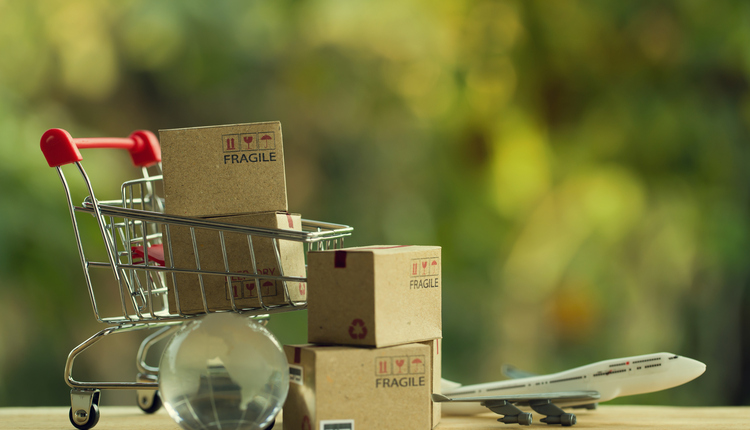Corrugated packaging has remained one of the most popular options for packaging materials. Current industry predictions forecast that the corrugated packaging market will grow to the point that, by 2023, the supply chain will be moving more than 443 billion square feet of cardboard every year.
Much of this growth is likely due to the continued success of e-commerce and rising demand for sustainable packaging options.
However, consistently rising demand doesn’t mean that consumer demands and retailer needs are staying the same. Customers and retailers both want packaging that is cheap, sustainable and wastes as little as possible. As a result, corrugated packaging manufacturers are developing new options and experimenting with their products.
Let’s look at how the industry is adapting to growing demand and the changing preferences of consumers and the shipping industry.
Growth of E-Commerce Creates More Demand for Sturdy Packaging
E-commerce’s continued success has had major knock-on effects on most of the economy. In general, people are shopping at home more often than they go to the store, and even major retailers are adopting new e-commerce offerings to stay competitive.
Robust packaging for everything from rigid products to fresh fruits and vegetables has now become a necessity.
Frequent shipping makes damage more likely. Consumers and retailers want to minimize harm to packages — meaning that corrugated packaging with greater strength and moisture resistance may soon be in higher demand.
Effective strength testing practices — like the Mullen burst test or edge crush test — are also essential, and will give you the best idea of what shipping conditions a specific kind of corrugated material can handle.
Sustainability Becomes a Top Concern
Corrugated cardboard is unique in being both one of the most widely used packaging materials and decently sustainable to begin with. Unlike polyurethane or other plastic-based, difficult-to-recycle materials, most cardboard is 100% biodegradable and recyclable without any additional treatment.
As the push for greener business practices gains momentum, retailers are looking for ways to demonstrate their commitment to sustainability. Cardboard packaging is both readily available and more eco-friendly than other prevalent packaging materials.
Manufacturers of other materials are also finding ways to make corrugated cardboard and related packaging materials more sustainable. The growth in demand for corrugated packaging has also made new and more efficient strapping systems — which bundle raw corrugated sheets with plastic straps — more essential than ever.
Some new straps come from recycled materials, like repurposed bottle flake. The use of these materials cuts down on waste and ensures the new straps are recyclable after use.
Retailers and logistics professionals are also adapting novel manufacturing methods that make their corrugated packaging more sustainable. Lighter-weight cardboard that is still durable enough to protect the contents within can help reduce some of the increased carbon cost of shipping cardboard — which is heavier than other packaging materials, like plastic and paper.
Lighter weights provide a few other benefits, as well. As the shipping industry pivots to increasing use of dimension weight pricing, lighter packaging can make a noticeable cost difference for retailers and logistics professionals over a long enough period.
Retail-Ready and Fit-to-Product Packaging
The increased volume of packages has retailers and logistics professionals looking to minimize waste where possible. Fit-to-product — aka fit-to-size or box-on-demand — packaging systems shape corrugated material to the dimensions of the project a retailer is shipping. These packages may have an irregular shape, depending on the kind of item shipped.
E-commerce sellers have largely driven demand for these systems — including big names like Amazon and smaller e-tailers, like IFG. They want to minimize end-user cardboard waste and cut down on potential storage inefficiencies.
Brick-and-mortar retailers, however, are also contributing to the trend. Retail-ready packaging that sellers can unload, unpack and place on shelves is similar to FtP packaging in that it needs to conform to product dimensions and be easy to store. Growth in demand for retail-ready packaging may encourage logistics companies to expand support for FtP corrugated and similar offerings.
How New Preferences Are Reshaping the Corrugated Packaging Market
Corrugated packaging has remained one of the most sought-after options for packaging materials. Current industry predictions forecast that the corrugated packaging market will grow in the next few years. Much of this growth is likely due to the continued success of e-commerce and high demand for sustainable packaging options.
However, consistently rising demand doesn’t mean consumer demands and retailer needs are staying the same. Customers and retailers both want packaging that is cheap, sustainable and wastes as little as possible. Corrugated packaging manufacturers are developing new options and experimenting with their products to keep up.
Megan R. Nichols is a STEM writer and the editor of Schooled By Science. She enjoys writing about the latest news and trends in manufacturing, the supply chain, and science. To keep up with the latest news, follow her on Twitter.













